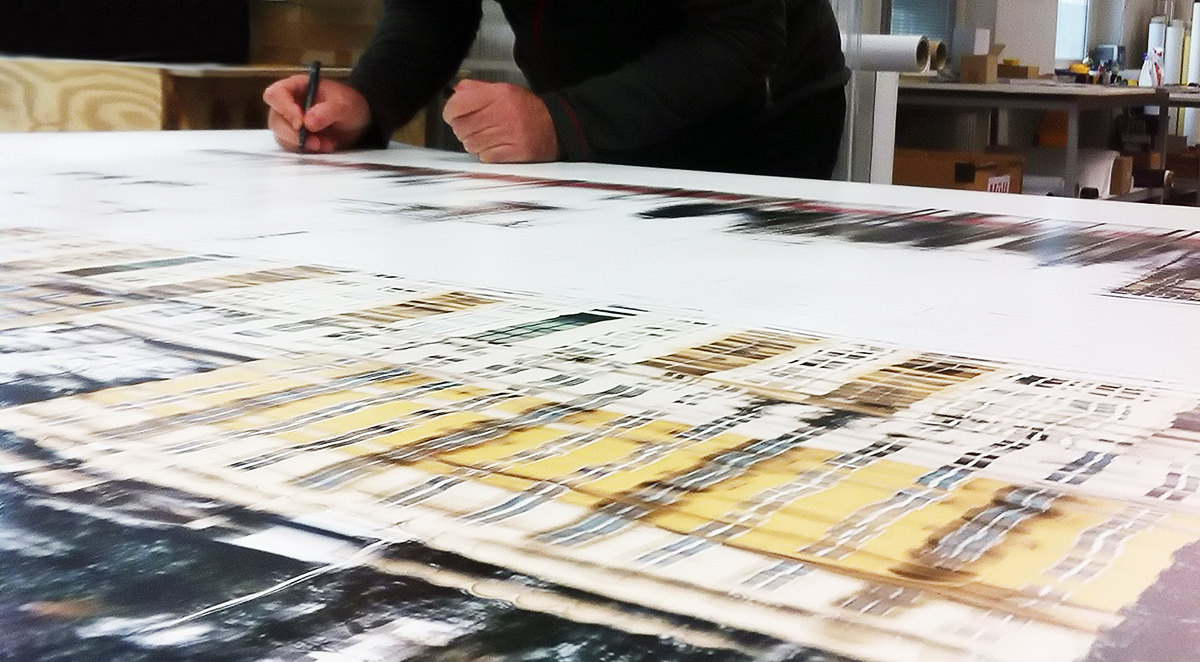It all started with a twitter post by Peter Braunholz: “Received ArtSlant Photography Award, Los Angeles/USA, for ‘Diametral’, Print on #Hahnemühle #PhotoRag® Ultra Smooth.” We got in contact with the internationally renowned photographer and invited him to participate in a Q & A. Read on about his reality-inspired, epic large-format fine art prints made exclusively on Hahnemühle paper, for international photo exhibitions and collections.
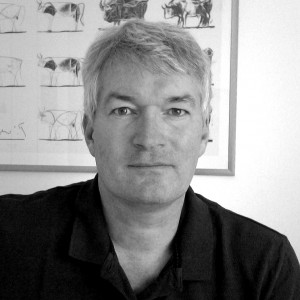 When did you discover your passion for photography?
When did you discover your passion for photography?
A special moment was a trip to New Zealand in 1999. There I was able take pictures in extremely different regions in a relatively short period. The resulting images took me much closer to the nature of the medium and the essence of photography: its ability to visualize hidden levels of reality.
How did you come to the subject of fine art photography?
My parents are musicians, so first the music was my focus. I played in various bands and studied music, later cinematic sciences. Until the early 90s I was a live and studio musician and had an assignment in a music publishing house with several recording studios. Beside that I studied design and photography. I left the music behind me and in 1993 I opened my first studio in Frankfurt am Main. As a result, I worked for many famous companies, publishers and stock photo agencies. My exaltation for the possibilities of photography led me finally to photo art. Today I would say that dealing with music, with rhythm and composition, and working in film was a great base for my photographic work.
Which of your projects/motifs opened the door to the art market/professional market?
In 2008 my former Cologne gallerist, Caren Jones, showed the series “Boy You Turned Me” and “Undercover” in exhibitions with internationally renowned colleagues such as Andreas Gursky, Thomas Ruff and Vik Muniz and at art fairs in German-speaking countries. It was followed by numerous acquisitions of companies and private collectors, for example, from the Mezzanine Trust for Art in Liechtenstein, which has one of the world’s most important art collections.
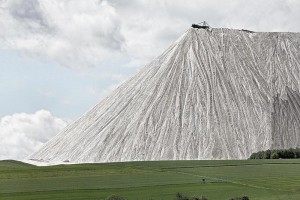 In 2013 I received on recommendation by curator Juan Xu a scholarship of Huantie Times Art Museum in Beijing, including lectorship at the Luxun Academy of Fine Arts in Shenyang. Overall, I spent three months in China. Since then more international presentations have arose, most recently in Zurich, Miami, Los Angeles, Venice and Paris. For 2016 an exhibition in New York is planned. I’m represented by Gallery Wesner in Konstanz, showing my work regularly at the Art Karlsruhe and the Kunst Zurich. Other partners who represent my work are the Gallery Julia Philippi in Heidelberg and starting in July 2015, Petra Becker International Art Bridge in Frankfurt/Main.
In 2013 I received on recommendation by curator Juan Xu a scholarship of Huantie Times Art Museum in Beijing, including lectorship at the Luxun Academy of Fine Arts in Shenyang. Overall, I spent three months in China. Since then more international presentations have arose, most recently in Zurich, Miami, Los Angeles, Venice and Paris. For 2016 an exhibition in New York is planned. I’m represented by Gallery Wesner in Konstanz, showing my work regularly at the Art Karlsruhe and the Kunst Zurich. Other partners who represent my work are the Gallery Julia Philippi in Heidelberg and starting in July 2015, Petra Becker International Art Bridge in Frankfurt/Main.
Do you have an idol in photography or who inspired you most?
What inspires me above all is reality. But there are many artists whose work talk to me and surely influenced me in one way or another. Ellsworth Kelly, Otto Piene, Richard Serra, and musicians such as Steve Jansen and Eumir Deodato or filmmaker Stan Brakhage and Jonas Mekas are included. Photographers including Albert Renger-Patzsch, Heinrich Riebesehl, Julius Shulman and Martin Parr. Wherever the development of a new form is of importance, I feel particularly moved.
How would you describe your photographic style?
In essence, it is my intention to make levels of reality visible which we cannot perceive with the naked eye. It is important for me to be inspired by each motif, by its very nature to come as close as possible, and not to manipulate the images or to stage. The statements shall be authentic. The photographic process itself is open-ended and may vary depending on the subject, and my pictures are designed to always provide something new. A goal that unfortunately increasingly takes a back seat in today’s often-politicized art.
What is most challenging about shooting or creating photo art?
To do justice to a subject, location or motif with as little redundancy requires as much energy and empathy as possible. Twenty pretty photographs in uniform, known style quickly customized as an object of art. Framed and hung as a tableau they could appeal at the first glance. Such series of photographs can be seen in exhibitions repeatedly but you then suffer from a lack of substance. By contrast, a few, or even just one unique image without a broad accompanying text says everything about a subject and provides at the same time a new aesthetic experience. And that requires real dedication, often for days and weeks and sometimes that does not even succeed in the end.
How important is the printed presentation of your works of art?
Only a printed or exposed image is a completed photographic work. Presentations on monitors and in catalogs are for me no more than aids and often very insignificant. For the production of my work I have been working for almost 20 years with the print provider Brieke in Frankfurt and have tuned my workflow exactly to their needs to get the most out of my images. Some time ago, I had decided to get all my work printed. First reason: the resolution (especially in very large formats) is much better than in darkroom prints, then the issue of archivalbilty and lightfastness was added. In my opinion the fine art inkjet print succeeds over the exposure and has clear advantages. And of course the fine art papers have their own aesthetics that fit my work very well.
Which is your favorite Hahnemühle paper and why?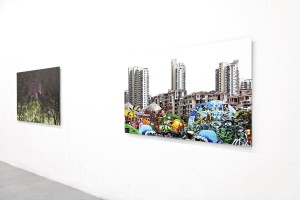
Quite often I do tests with different papers to find the perfect fit for my kind of work, such as Hahnemühle FineArt Baryta and German Etching. They are both wonderful papers and sometimes I find the choice is not easy. Under acrylic glass I prefer working with Hahnemühle PhotoRag® Ultra Smooth.
Hahnemühle papers are available almost anywhere in the world which is very important for my exhibits. I could have printed a show for a museum in Beijing two years ago completely on Hahnemühle FineArt Baryta locally. Otherwise it could have been challenging to bring my images from Germany to China.
Do you have a dream of a subject or a project that you would like even realize?
Yes, a few. But I don´t want to inspire anyone to anticipate something 😉
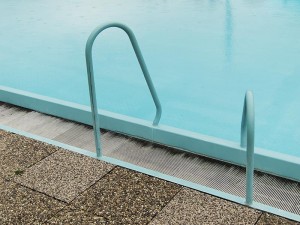 What are you planning next?
What are you planning next?
Joanna Szupinska-Myers, curator at the California Museum of Photography, selected my work for an international exhibition at the Los Angeles Center for Digital Art, which will open on June 11. Now we are discussing the production. I also created a concept for a book about my work, which will be released next year, and will prepare a work for a show in July at the Louvre in Paris. The end of October it’s back to the Gallery Wesner on the Kunst Zurich. On the other hand I had been busy with exhibitions so not much new work have naturally emerged. I’m just researching places where I can work out something new over the coming months.
Thanks for your time, Peter and all the best!
See more from Peter Braunholz on his website www.peterbraunholz.de
Peter Braunholz will be up on the wall at
LOS ANGELES CENTER FOR DIGITAL ART: International Juried Exhibition – California Museum of Photography – Jun 11 – Jul 03
MUSÉE DU LOUVRE: Exposure Award
KUNST ZURICH ART FAIR
presented by Gallery Wesner


